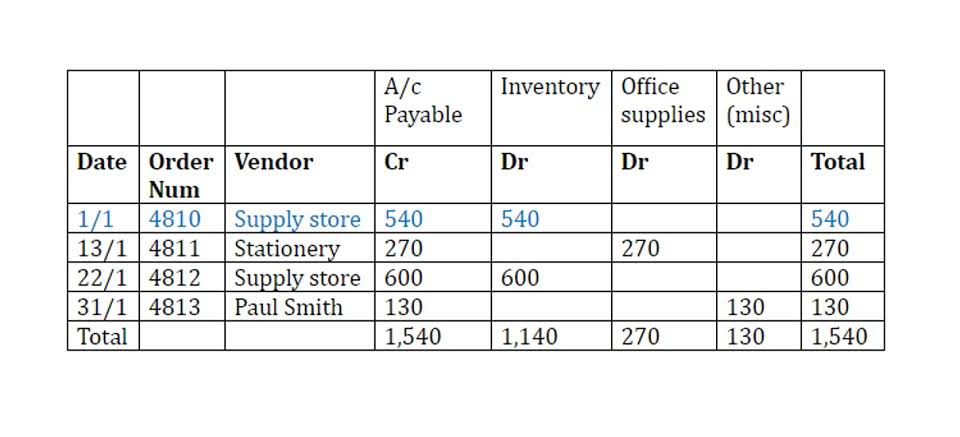
Outstanding shares decrease if the company buys back its shares under a share repurchase program. Understanding the difference between authorized and outstanding shares allows investors to make accurate calculations of financial ratios. Using outstanding shares to determine earnings per share (EPS) could result in inflated gains. Earnings per share is a measure of a company’s valuation, calculated by dividing its profit by the number of shares outstanding. A company’s market capitalization is the current market value of all of its outstanding shares.
Earnings per share (EPS) FAQs
Here’s what you need to know about the different share counts that publicly traded companies use, as well as how you can calculate the number of outstanding common shares. The image below shows a section of Apple’s (AAPL 1.52%) balance sheet from 2016 through 2020. The second line from the bottom indicates the number of shares outstanding at the end of each fiscal year, and the bottom line indicates how many new shares were issued by Apple in that year. Total shares outstanding decreased from more than 21 billion in 2016 to less than 17 billion in 2020. The tech company spent billions buying back its stock during these years. https://www.instagram.com/bookstime_inc Navigating the world of outstanding shares is essential for anyone involved in the financial markets.

Add the Preferred and Common Stock, Then Subtract the Treasury Shares
Outstanding shares are the shares that have been issued and are currently held by investors. This “issued” stock can be less than the total authorized, but it can never be more. Each level has a profile that can help investors gain insights into the behavior of the company. Small caps are generally young companies in the growth stage of development. Large caps are mature companies; they may not offer the same growth potential, but they can offer stability. By owning stocks in each category, investors ensure a certain amount of diversification in assets, sales, maturity, management, growth rate, growth prospects and market depth.
Authorized Shares vs. Outstanding Shares: An Overview
- Company A has issued 25,800 shares, offered 2,000 shares to two partners, and retained 5,500 stocks in the treasury.
- A stock split occurs when a company increases the number of its outstanding shares without changing its overall market cap or value.
- It can split its stock to reward its current investors and to make its price per share more tempting to new investors.
- Ask a question about your financial situation providing as much detail as possible.
- This value changes depending on whether the company wishes to repurchase shares from the market or sell out more of its authorized shares from within its treasury.
Helpful Fool Company’s board has elected to issue just 2,000 shares at this time. Therefore, the company currently has authorized 5,000 shares and has 2,000 shares issued and outstanding. The number of shares outstanding for a how do you calculate outstanding shares company is equal to the number of shares issued minus the number of shares held in the company’s treasury.
- Those instruments can be “in the money” if the exercise price — the price designated for the stock by the option or warrant — is below the stock’s trading price.
- The most crucial aspect of earnings per share comprehension is knowing how to do the calculation.
- The Motley Fool reaches millions of people every month through our premium investing solutions, free guidance and market analysis on Fool.com, top-rated podcasts, and non-profit The Motley Fool Foundation.
- Group 1 consists of 200,000 split shares that were effectively outstanding for the entire year.
- Next, you’ll want to look for the common stock line item on the company’s balance sheet.
- Common shares are types of stocks that show partial ownership in a company.
- As a result, it decreases the number of outstanding stocks in the public and increases the amount of treasury shares.
- Basic shares mean the number of outstanding stocks currently outstanding, while the fully diluted number considers things such as warrants, capital notes, and convertible stock.
- Helpful Fool Company’s board has elected to issue just 2,000 shares at this time.
- Holders of cumulative preferred shares are entitled to be paid current and past dividends (dividends in arrears) that the common shareholders have not paid.
- The following are the many sorts of earnings per share that differ from the calculation described above.
- These are instruments that give the holder a right to purchase more stock from the company’s treasury.
The float, also called the free float or the public float, represents the subset of shares outstanding that are actually available to trade. Outstanding shares are the shares in the hands of the public, executives and employees. They are the number of shares actually owned by the company’s shareholders. Understanding a company’s financials is crucial to successful investing. Market value of equity can be compared to other valuations like book value and enterprise value. A company’s enterprise value incorporates its market value of equity into the equation along with total debt minus cash and cash equivalents to provide a rough idea of a company’s takeover valuation.

- The float, for instance, has no bearing on market capitalization or earnings per share.
- While outstanding shares are a determinant of a stock’s liquidity, the latter is largely dependent on its share float.
- The weighted average is a mean value calculated by averaging each quantity against an assigned weighting to determine the relative importance of each quantity.
- The company has issued these shares, and are in the hands of investors who may buy and sell them on the open market.
- It will, therefore, miss shares that have been issued but are not outstanding, such as treasury stock.
- This refers to a company’s shares that are freely bought and sold without restrictions by the public.
However, simply increasing outstanding shares isn’t a guarantee of success; companies must consistently deliver earnings growth to achieve sustained investor confidence. So far, we’ve focused on shares outstanding, whether basic or diluted, at a fixed point in time. In SEC filings, companies will report the total number of shares outstanding on a given day, but in their quarterly and annual figures they must also offer the weighted average shares outstanding. Outstanding shares are one of three classifications of the share count. Issued shares refer to those shares issued by the company over time — yet, unlike outstanding shares, the number of issued shares includes shares repurchased by the company and held as treasury stock. The number of shares outstanding increases whenever a company undertakes a stock split.
Types of Stocks You Should Know
How much of the business your one share buys depends on the total common stock outstanding, a figure you can easily determine using the company’s balance sheet. Companies with big news that affects their number of shares outstanding, such as stock splits, announce the events in press releases that are reported by the business media. The weighted average number of shares is determined by taking the number of outstanding shares and multiplying it by the percentage of the reporting period for which that number applies for each period.

Shares that are issued or sold to investors from the available number of authorized shares are known as outstanding shares. Usually, these shares trade in the secondary market on public exchanges. The total number of a company’s outstanding shares as seen in the balance sheet is the sum of float and restricted shares. In other words, authorized shares are the total number of shares that companies can legally issue or sell to investors. Outstanding shares are the total number of shares that are held by https://www.bookstime.com/ shareholders.

